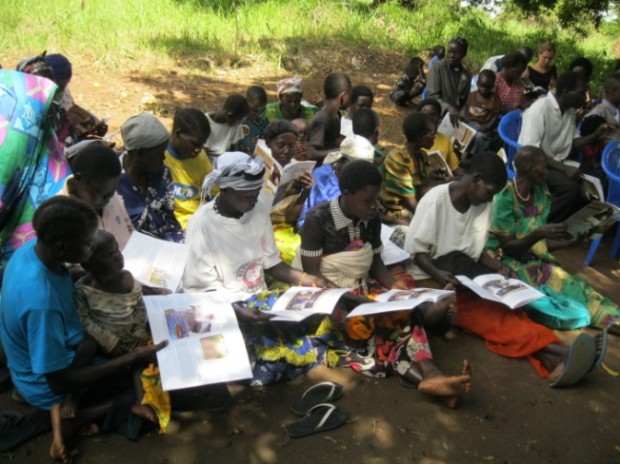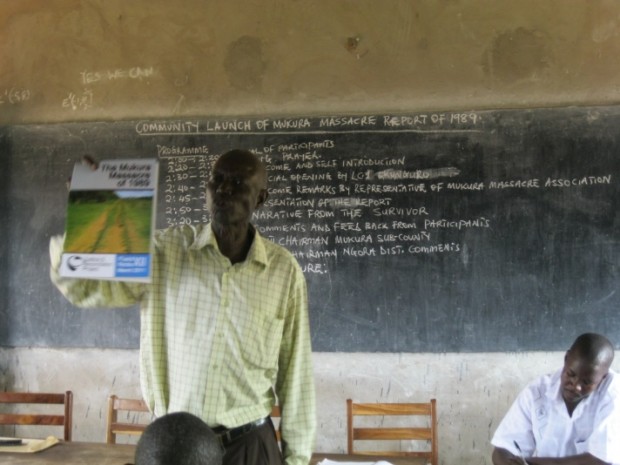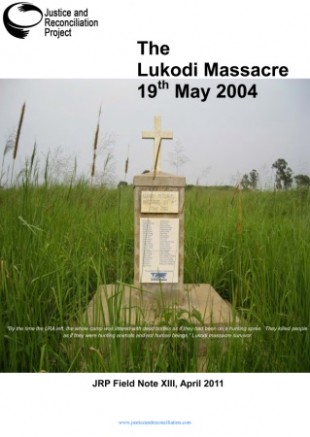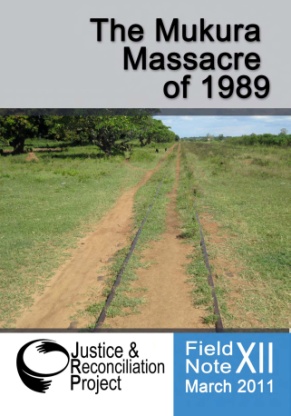“Lukodi Massacre Victims Struggle To Live With Memories,” Uganda Radio Network, 27 May 2011
http://ugandaradionetwork.com/a/story.php?s=33984
By Joe Wacha
The survivors of the 2004 massacre at Lukodi internally displaced people’s camp in Gulu district say they require government to urgently initiate mechanisms to help them cope with the dreadful memories of the attack.
Survivors of the 2004 Lukodi massacre in Gulu district say they are individually carrying the burden of the atrocities committed during the war due to lack of government support to heal the past.
Many of the survivors say they require truth-telling by all the parties in the massacre, construction of memorials to honor the dead, acknowledging the past and a comprehensive reparation to be able to move on from the incident.
On May 19, 2004, a group of the Lord’s Resistance Army rebels descended on the Lukodi displaced people’s after overpowering a nearby military unit and murdered over 50 people. The rebels also destroyed property, abducted scores of the IDPs, while others managed to escape with bullet wounds. Only a few huts and a memorial stone inscribed with some of the names of the people who died in the attack, stands near the ground that used to be the camp.
However, seven years after the attack, the victims complain that government has done nothing to help them recover from the traumatic incident.
Nelson Oloya, a resident of Lukodi village, on whose land the IDP camp once stood, tearfully recalls how the rebels killed his family members. Oloya ran to Gulu town. He explains that although he is now back home, memories of the past still haunt him. He says government should establish counseling services to help them overcome the trauma.
Doreen Abalo, another victim who lost her husband and three step children in the attack, explains that she is haunted by memories. Abalo explains that her only relief is when she meets with the village mates to share experiences.
Abalo says she wants the murderers to be prosecuted and government to compensate people who lost their relatives and property or got wounded. Although the Juba peace agreement between the government and LRA rebels provides for reparations for war victims, the government is yet to implement the resolution.
Barlington P’angwec, the LC5 representative for Bungatira Sub County repeated the calls for urgent reparations. He wondered how government could quickly compensate victims of the July 2010 bomb blasts in Kampala and ignore those in northern Uganda.
The UN Principles and Guidelines on the Right to Remedy and Reparation for Victims of Gross Violation also demands that victims adequate, prompt and appropriate remedies for victims.
Evelyn Akullo, a research officer at Justice and Reconciliation Project explains that the victims are struggling to find ways to deal with the past and move on with life amidst a strong need to reconcile with each other and what happened to them.
She says government should design and implement an inclusive and transparent reparations policy for the victims. Barlonyo, Atiak, Burcoro and Mucwini are some of the other massacre sites where people still wait for compensation.







